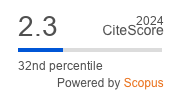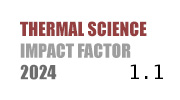THERMAL SCIENCE
International Scientific Journal
Thermal Science - Online First
online first only
Thermal comfort analysis in an educational building in a hot climate area using CFD
ABSTRACT
This study uses Computational Fluid Dynamics (CFD) simulations to optimize the indoor thermal environment in a computer lab at a civil engineering department in Madurai, Tamil Nadu, India, characterized by a hot semi-arid climate by evaluating different roof and Heating, Ventilation, and Air Conditioning configurations using CFD simulations and to examine the thermal comfort and indoor air quality. The goal of the study is to comprehend how various roof materials and air conditioning affect the temperature, air dispersion, and thermal comfort of the room. Autodesk Revit was used to construct three scenarios, while Autodesk CFD and ANSYS Fluent were used for analysis. The findings of the study provide the use of gypsum-board roofing combined with AC for optimizing thermal performance for the design of educational facilities, since they emphasize how important air conditioning and material choices are to attaining the best possible thermal comfort. Scenario III (AC + Gypsum roof) showed a 24% temperature drop compared to Scenario I (RCC roof), and 15% better thermal distribution than Scenario II.
KEYWORDS
PAPER SUBMITTED: 2025-04-21
PAPER REVISED: 2025-07-21
PAPER ACCEPTED: 2025-07-28
PUBLISHED ONLINE: 2025-09-13
- Kajjoba, D., Kalema, T., & Tumwesige, V. (2025). Assessment of thermal comfort and its potential for energy efficiency in low-income tropical buildings: A review. Energy and Buildings. doi.org/10.1016/j.enbuild.2025
- Hwang, R. L., Lin, T. P., & Kuo, N. J. (2016). Field experiments on thermal comfort in campus classrooms in Taiwan. Energy and Buildings, 133, 228-238
- Kummitha, H., Hordijk, T., & Van Schijndel, J. (2021). CFD-based analysis of thermal comfort in buildings: A case study in office rooms. Building and Environment, 187, 107358
- Wu, X., Li, Y., & Zhang, Q. (2025). Strategies for driving the future of educational building design in terms of indoor thermal environments: A comprehensive review. Buildings, 15(5), Article 816. doi.org/10.3390/buildings15050816
- ASHRAE Standard 55: Thermal Environmental Conditions for Human Occupancy. American Society of Heating, Refrigerating and Air-Conditioning Engineers, Inc
- Al Niyadi, S., & Elnabawi, M. (2024). Advancing hybrid ventilation in hot climates: A review of current research and limitations. Frontiers in Built Environment, 10, Article 1502941. doi.org/10.3389/fbuil.2024.1502941
- Autodesk Revit: A Building Information Modeling software for architects, structural engineers, MEP engineers, designers, and contractors
- ANSYS Fluent: A computational fluid dynamics software used to simulate fluid flow, heat transfer, and chemical reactions
- Hidki, R., El Moutaouakil, L., Boukendil, M., Charqui, Z., & Zrikem, Z. (2022). Natural convection coupled to surface radiation in an air-filled square cavity containing two heat-generating bodies. Heat Transfer, 1-22. doi.org/10.1002/htj.22778
- Romero-Lara, S., Cuevas, C., & Pérez-Lombard, L. (2021). Seasonal analysis comparison of three air-cooling systems in terms of thermal comfort, air quality and energy consumption for school buildings in Mediterranean climates. Applied Sciences, 15(2), 694. doi.org/10.3390/app15020694
- Mogra, A., et al. (2018). CFD simulation of air-conditioning systems in classrooms for thermal comfort and indoor air quality. Journal Name, Volume(Issue), pages
- Zhou, J., & Chen, Q. (2024). The influence of zonal air supply on thermal comfort in a classroom. Building Simulation, 17, 155-170. doi.org/10.1007/s43621-024-00769-3, J., & Brown, L. (2020). Analysis of wind flow patterns around urban buildings using CFD. Journal of Wind Engineering and Industrial Aerodynamics, 195, 104-115. DOI: 10.1016/j.jweia.2020.104115
- Johnson, P., & Lee, K. (2019). The impact of building orientation on natural ventilation in high-rise buildings. Building and Environment, 148, 258-267. DOI: 10.1016/j.buildenv.2018.11.032
- Wang, X., & Chen, Q. (2018). Numerical simulation of indoor air quality in different ventilation scenarios. Energy and Buildings, 158, 1289-1300. DOI: 10.1016/j.enbuild.2017.11.045

